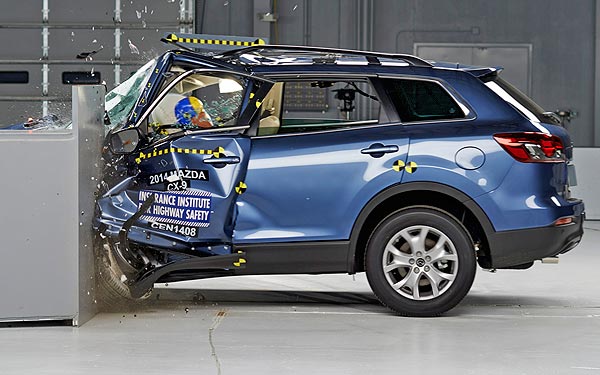How to Determine a Car’s Safety Rating
When the time rolls around to purchase a new or used vehicle, one thing most driver’s seem to check for is a car’s safety rating. Not only does it help them determine whether a specific make or model is a good fit for their family, it also gives consumers a better idea of the quality and build of a model.
Currently, there are two national organizations, the Institute for Highway Safety (IIHS) and the National Highway Traffic Safety Administration (NHTSA), that thoroughly assess vehicle safety for the public. Here’s our step-by-step guide on how to search and evaluate car safety in 2022 using these two databases.
What to know about IIHS and NHTSA
Both safety organizations offer an abundance of resources for safe-minded drivers. From road safety to technology and information, you’ll be sure to find the information you’re looking for. However, there are a few distinctions between these two agencies that are worth pointing out.
Here’s how IIHS and NHTSA differ:
The Insurance Institute for Highway Safety is a nonprofit organization that opened its doors in 1959. They are largely known for testing vehicles each year and dishing out two prestigious awards: Top Safety Pick and Top Safety Pick+. Automakers continually strive to earn ‘Good’ ratings throughout IIHS testing criteria, which leads to the highest ratings in a vehicle’s class.
The NHTSA is a government agency that is directly part of the U.S. Department of Transportation. While the NHTSA awards safety ratings as well, their recall portal has become more well-known and an excellent resource for drivers interested in learning more about impending safety concerns.
Regardless of which safety agency you hold in higher esteem, it’s evident that both serve as valuable databases for reducing accident injury and death. If NHTSA orders a recall on a specific model, the driver can often learn more about this safety concern before their automaker even notifies them.
Checking a car’s safety rating on IIHS
The Insurance Institute for Highway Safety makes evaluating car safety a walk in the park. Aside from offering ‘Best of’ lists and trending automotive news, the IIHS provides an easy-to-use search engine designed for safety rating evaluations. Here’s exactly how to get started:
- Head over to the IIHS website.
- Click on the tab ‘Vehicle ratings‘.
- Type in the make and model (and year if you prefer).
- Review the test results.
It’s really that easy! Now once you have the test conclusions in front of you, it’s up to you to measure whether a vehicle’s safety rating is up to snuff. With the IIHS, in particular, they evaluate two major aspects of safety: crashworthiness and crash avoidance and mitigation. Under these categories, you’ll find scores ranging from Good, Acceptable, Marginal and Poor.
To learn more about how the IIHS conducts tests and assigns ratings, read here for an informative overview of their testing criteria. You can also watch the video below to see first-hand how they test one of our favorite car safety features — headlights.
Checking a car’s safety rating on NHTSA
The NHTSA’s database is similar to IIHS, but we’ll break down the process for you here:
- Visit the official NHTSA website.
- Click on the ‘Ratings’ tab to begin your search.
- Enter a car’s year, make and model.
- Scan the results to find the right car configurations. (For example: 2-door coupe versus 4-door sedan)
- Assess frontal, side, and rollover ratings.
In addition to safety results and recalls, this government agency also points out key technologies that improve the overall safety of the model under consideration. So in that case, if you’ve been debating upgrading to lane departure warning, the NHTSA will let you know if its worth it in that particular model.
 What safety features guarantee top ratings?
What safety features guarantee top ratings?
Both the IIHS and NHTSA take a number of things into consideration when determining annual safety ratings. However, advanced car technology has changed the game significantly in recent years. While the bones of the vehicle must be durable and strong to withstand a frontal or side-impact crash, the technology within is what’s making drivers better prepared for a collision.
Among all the safety features available nowadays, the NHTSA tends to value the following the most when assessing a car’s safety rating:
- automatic emergency braking
- lane departure warning
- forward collision warning
- brake assistance
Meanwhile, the IIHS takes advanced safety tech seriously but approaches it a tad differently. They advocate more in favor of headlight visibility and front crash mitigation systems. Oftentimes, it comes down to these two factors when distinguishing a vehicle between Top Safety Pick and Top Safety Pick+.
If buying a new or used model is in the cards for you this year, make sure to spend some time on the IIHS or NHTSA websites before signing the dotted line. The more safety information you acquire, the better decision you’ll make on which vehicle is a fair fit.















